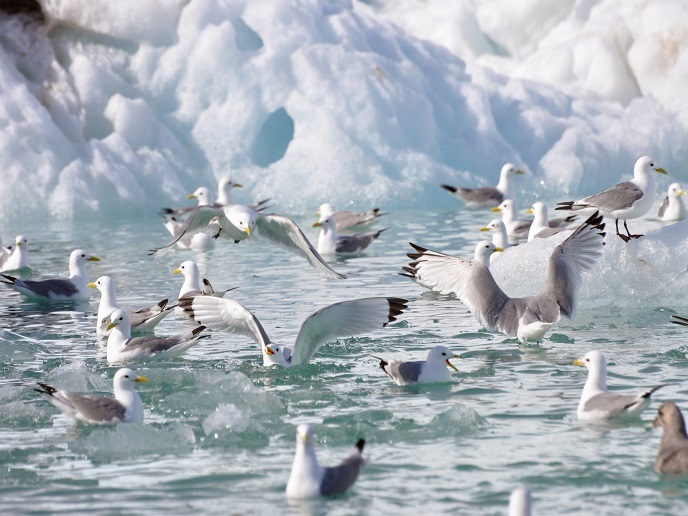Tackling transformations in Arctic regions
FACE-IT emerged from the recognition that the biodiversity of Arctic coastal zones is intricately linked to the rates of cryosphere changes. As the polar glaciers recede at an alarming pace, these changes reverberate across the entire Arctic ecosystem, impacting local species, trophic systems and local communities. By focusing on selected Arctic fjord systems in Greenland, as well as Svalbard and Finnmark in northern Norway, the project aims to understand and address the challenges posed by rapid cryosphere changes. Project coordinator Kai Bischof explains why the project was so necessary: “It’s in the Arctic where we really see the manifestation of global climate change. And where the temperature is increasing four times faster than the global average. The rate of change is incredibly rapid, and there’s no turning back from these transformations if we don’t act.” Bischof adds: “FACE-IT aimed to understand and address the multifaceted challenges posed by rapid cryosphere and biodiversity changes in the region.”
Inhabitants and visitors
It’s been proven that local species in the region face significant challenges due to climate change, forcing them to migrate further north or risk losing their habitats entirely. But the Arctic’s influence extends beyond environmental impacts, affecting socio-economic factors such as fishing and tourism, and the communities reliant on these resources. The main goal of the FACE-IT project was to develop approaches to navigating changes in Arctic fjord environments. The project brought together a wide range of experts from environmental and social science fields, aiming to comprehensively understand what drives these changes and how they affect local wildlife, ecosystems and the well-being of local populations, including aspects such as tourism. “Tourism in Svalbard has surged,” notes Bischof. “As retreating ice opens up previously inaccessible areas, tourist boats are able to visit pristine areas. This brings disturbances and pollution and also strains local infrastructure and rescue services.”
Multifaceted approach
FACE-IT tackled these complex challenges in several ways, from examining the factors driving changes to developing shared knowledge for effective adaptive management approaches. Researchers engaged in experimental field and lab work simulating scenarios, exposing organisms to predicted changes in temperature, light intensity and other factors. Additionally, they utilised modelling approaches to compile all available data to make projections. “The project emphasised interdisciplinary collaboration and international cooperation that generated a lot of brand-new knowledge about fjord functioning,” adds Bischof. Meanwhile, Indigenous communities in Greenland and their traditional knowledge systems face significant challenges due to the transformations in Arctic fjord systems and increased economic growth. This prompted the need for community engagement to address changes in food sources and, potentially, livelihoods. The FACE-IT project generated valuable insights into long-term trends in Arctic fjord systems, and tailored recommendations for specific regions. The work also offers proposals on conserving the Arctic’s unique biodiversity, identifying refuges for the protection of species and implementing restrictions on tourism access. FACE-IT’s findings directly address the EU’s Arctic policy, inform reports by the Intergovernmental Panel on Climate Change and Intergovernmental Science-Policy Platform on Biodiversity and Ecosystem Services and support the UN’s Sustainable Development Goals, aligning with broader international frameworks to promote a more sustainable and resilient future for the region.
Keywords
FACE-IT, polar, climate change, fjord, biodiversity, tourism, Indigenous, cryosphere, Arctic, ecosystem



